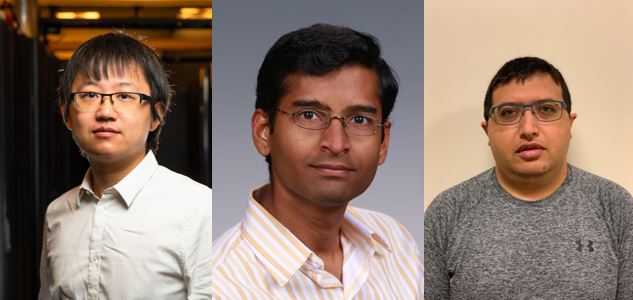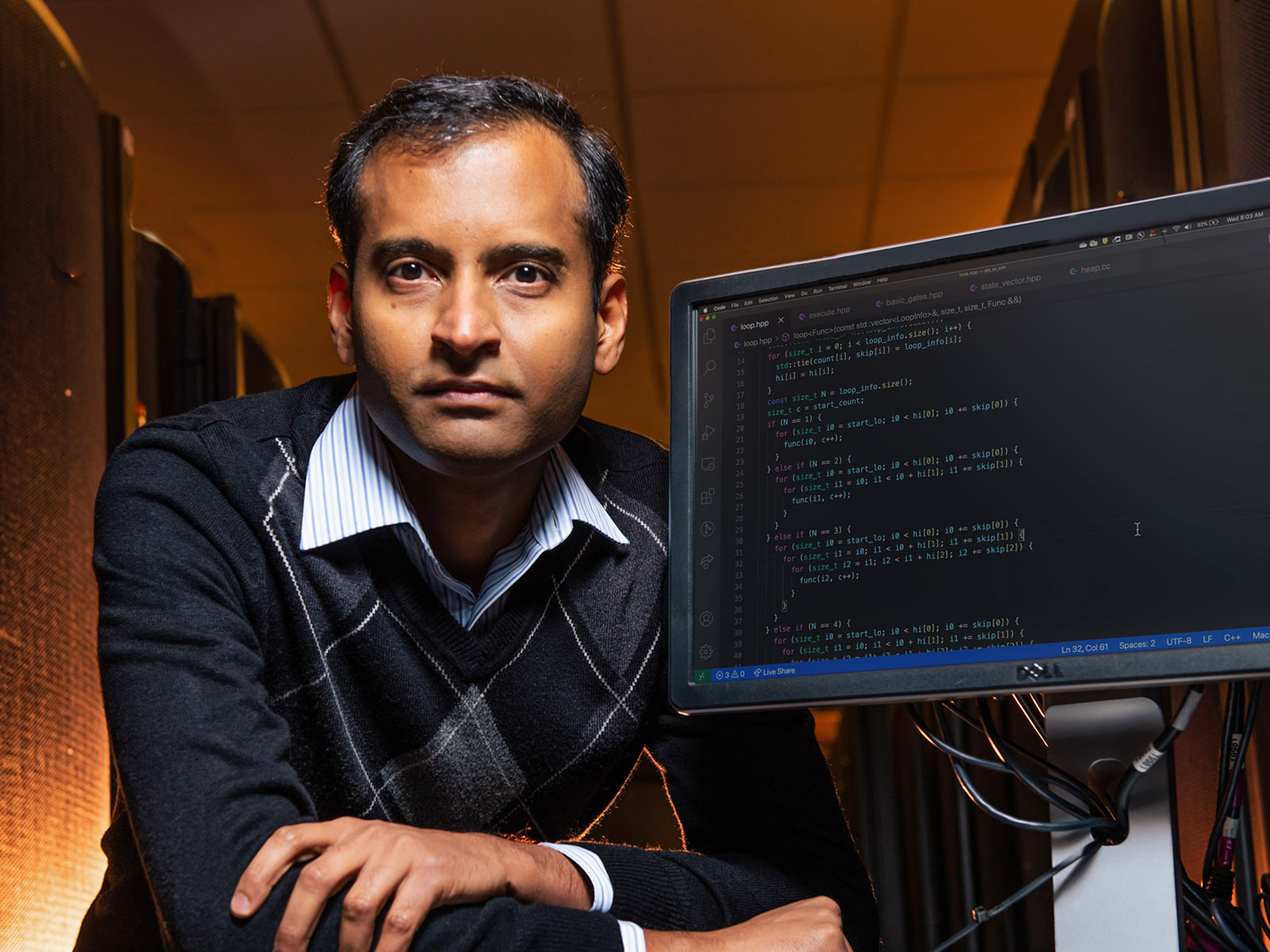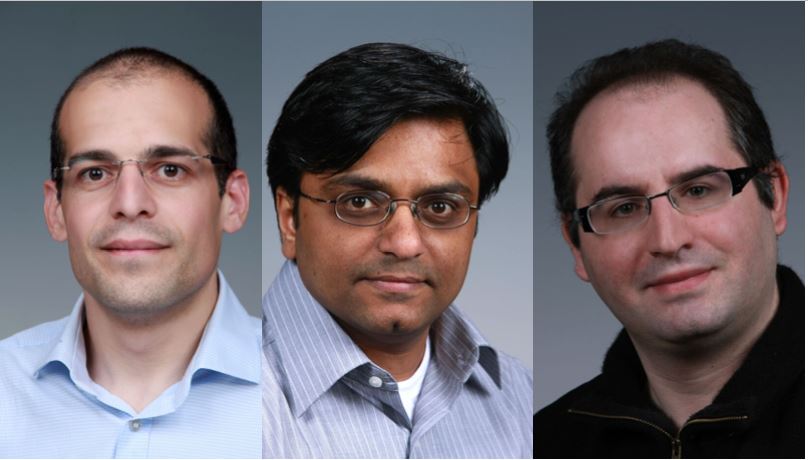Featured Presentations
Density Matrix Quantum Circuit Simulation
via the BSP Machine on Modern GPU Clusters
Paper: Tuesday, November 17, 7 a.m. PST/ 10 a.m. EST, Track 3

Simulations of quantum programs on classical computers are important for validating quantum algorithms.
To keep up with the evolution of quantum computing, it’s also vital to understand the effect of system noise and designing applications for the next generation of quantum computers.
PNNL’s Ang Li, Sriram Krishnamoorthy, Omer Subasi, and Xiu Yang of Lehigh University wrote a paper that proposes a new multi-GPU programming methodology and applies the methodology to building a multi-GPU simulator. The simulator is 10 times faster than a corresponding simulator on various platforms. The paper is nominated for best paper at SC20.
Running Quantum Programs at Scale through an Open-Source, Extensible Framework

Booth Presentation: Tuesday, November 17, 1:30 PT/4:30 ET
Sriram Krishnamoorthy, a PNNL Laboratory Fellow and computer scientist, and Microsoft's Bettina Heim are presenting an addition to Microsoft's Q# infrastructure that enables analysis and optimizations of quantum programs and adds the ability to bridge various backends to execute quantum programs. While integration of Q# with external libraries has already been demonstrated, the new addition of a Quantum Intermediate Representation (QIR) will enable the development of a broad ecosystem of software tools around the Q# language. They will present integration of the density-matrix based simulator backend DM-Sim [2] with Q# and the Microsoft Quantum Development Kit.
PREEMPT: Scalable Epidemic Interventions
Using Submodular Optimization in Multi-GPU Systems
Presentation: Wednesday, November 18, 10 a.m. PT/1 p.m. ET, Track 3

Mathematical programming methods have proven to be effective in computation.
A research team from PNNL, Washington State University, and the University of Virginia developed a test case for a fast and scalable algorithm that optimizes the distribution of vaccines that could significantly reduce the number of infections in an epidemic.
PNNL’s Marco Minutoli, Mahanatesh Halappanavar, and Antonino Tumeo, Washington State University’s Ananth Kalyananaraman, and University of Virginia’s Anil Vullikanti and Prathyush Sambaturu will present their algorithm, which is a breakthrough approach to creating interventions for epidemics.
Smart-PGSim: Using Neural Network to Accelerate
AC-OPF Power Grid Simulation
Paper: Wednesday, November 18, 11 a.m. PT/2 p.m. ET, Track 5

One of the most important optimization problems for the operation of the power grid is optimal power flow.
PNNL’s Gokcen Kestor as well as Wenqian Dong, Dong Li and Zhen Xie, of the University of California, Merced, developed a neural network approach to the problem of accelerating optimal power flow by generating an intelligent initial solution. The solution generated by the neural networks allows faster convergence without losing the optimality that traditional methods experience. Smart-PGSim generates a novel multitask-learning neural network model to speed up the AC optimal power flow simulation. The work is part of PNNL’s Center for Advanced Technology Evaluation (CENATE), which focuses on the integrated evaluation of early technologies to predict their potential and guide future systems design.